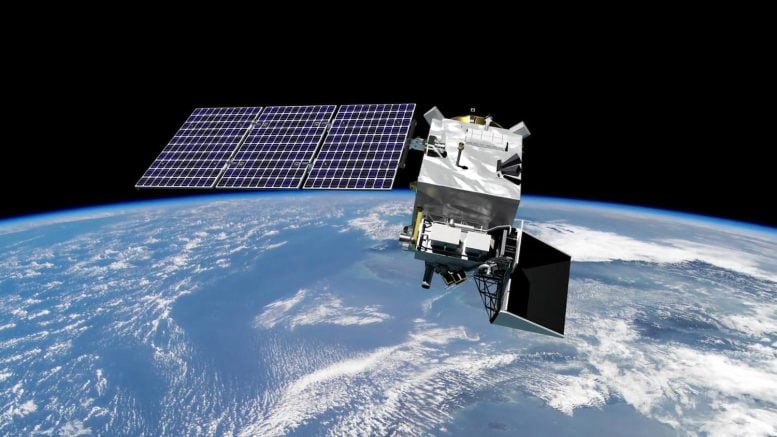A SpaceX Falcon 9 rocket with NASA’s PACE (Plankton, Aerosol, Cloud, ocean Ecosystem) spacecraft stands vertical at Space Launch Complex 40 at Cape Canaveral Space Force Station in Florida on Monday, February 5, 2024. PACE is NASA’s newest earth-observing satellite that will help increase our understanding of Earth’s oceans, atmosphere, and climate by delivering hyperspectral observations of microscopic marine organisms called phytoplankton as well new data on clouds and aerosols. Liftoff of the PACE mission is set for no earlier than 1:33 a.m. EST on Thursday, February 8, 2024. Credit: SpaceX
Launch weather officers with Cape Canaveral Space Force Station’s 45th Weather Squadron predict 95% favorable weather conditions for the launch of NASA’s PACE (Plankton, Aerosol, Cloud, ocean Ecosystem) mission aboard a SpaceX Falcon 9 rocket.
The launch has been delayed two times due to unfavorable weather conditions near the Space Coast. For the primary launch window early Thursday morning, the only concern is a very low risk of a Cumulus Cloud Rule violation.
Liftoff continues to be targeted for 1:33 a.m. EST on Thursday, February 8, from Space Launch Complex 40 at Cape Canaveral Space Force Station Space in Florida.

NASA’s PACE (Plankton, Aerosol, Cloud, ocean Ecosystem) spacecraft in orbit over Earth. Credit: NASA GSFC
NASA’s PACE (Plankton, Aerosol, Cloud, ocean Ecosystem) mission is a strategic scientific endeavor designed to advance our understanding of Earth’s ocean and atmosphere interactions. The mission’s primary objective is to monitor global ocean color, with a keen focus on understanding the distribution and diversity of plankton in the marine ecosystem. This is crucial for comprehending the ocean’s role in carbon cycling, climate regulation, and the support of marine life.
PACE’s state-of-the-art instruments, including a spectrometer designed to measure ocean color across a wide spectrum of light, will provide unprecedented data. These measurements will not only improve our knowledge of ocean biogeochemistry but also aid in the study of atmospheric particles and clouds. By closely observing the interactions between the atmosphere and the ocean, PACE aims to enhance predictions related to Earth’s climate and to assess ecosystem responses to environmental changes.
Through its comprehensive approach to studying Earth’s ocean and atmosphere, the PACE mission promises to significantly contribute to environmental science, offering insights that could lead to more informed decisions regarding climate change and ocean health.





